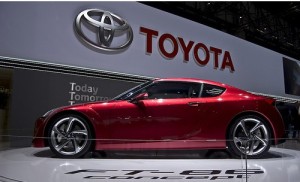
Noreen O’Leary recently did a piece for Ad Week about Toyota’s PR response to the company’s numerous vehicle recalls. Toyota launched a large “transparency” and “apology” campaign, including social media outreach.
The verdict is still out on whether or not that social media outreach was an integral part of the campaign’s success, but it’s an interesting case study nonetheless. Toyota experienced a 41 percent increase in March 2010 sales, compared to March of last year. The company can’t prove a link between social media outreach and the sales boost, however, especially considering the unprecedented sales incentives and discounted leasing deals. There were also mainstream media appearances by executives on such outlets as NBC, ABC, and NPR, and there was a national advertising campaign.
Toyota Motor Sales USA president and chief operating officer Jim Lentz participated in the Digg Dialogg live-stream interview series on February 8, marking the first time a corporate executive had been featured. Toyota was not allowed to choose canned questions or otherwise shape the conversation. Lentz answered the top 10 questions voted by Diggers from more than 1,400 submissions; only four of those dealt with recall or safety issues.
It was the most popular Dialogg appearance to date, generating more than 1 million views in the first week, but there was still not much online buzz about the interview before or after the event. The general online buzz about Toyota skyrocketed directly after the January 21 recall announcement (from less than 100 to more than 3,200) and after the stop-sale announcement on January 25 (from 500 posts that morning to more than 3,000 by that afternoon).
Lentz had also participated in a Twitter chat, and the company became more active on its Twitter feed (@Toyota) after the January 21 recall announcement. Toyota also created a TweetMeme platform called “Toyota Conversations” to aggregate online chatter, including the negative feedback. That negative chatter has declined since the recalls first hit the news, but J.D. Power & Associates representative Syvetril Perryman thinks that might have more to do with fatique than with positive response to the online outreach.
At the beginning of February, Toyota created a social-media response room, staffed with up to eight people constantly monitoring and responding to the online conversation. There are four official Facebook pages, which saw a 10 percent fanbase growth between late January and early March, which had led some to argue that Toyota owners have remained loyal, and that the recall fiasco has not affected its popularity too much. That doesn’t necessarily mean those Facebook users are “fans,” however, so much as that they wanted to keep track of company updates via their Facebook News Feed.
Doug Frisbie, Toyota Motor Sales USA’s national social media and marketing integration manager, said, “The recall situation we faced in this new landscape was one brands had not really seen before. We were in unchartered territory.” In another interview, he said, “We certainly have learned a ton, and those learnings, like creating a social-media-response team and opening multiple platforms where we can communicate directly with customers, will be part of our strategy going forward. And, eventually, those things will give us an advantage.”
“Social media allows brands to become more humanized,” he concludes. Catharine P. Taylor writes in her Advertising Age article about the PR campaign, “[…] I was reminded that given the rise of social media, jumping into a conversation when it’s most against you is perhaps the only way that a major company can appropriately handle PR these days.”
Source: “How Toyota Helped Digg Itself Out of Trouble,” Ad Week, 04/05/10
Source: “Toyota’s Crisis: Prism Into How Social Media Has Radicalized Public Relations,” Social Media Insider, 03/03/10
Source: “The Cult of Toyota,” Advertising Age, 03/01/10
Image by David Villarreal Fernández, used under its Creative Commons license.